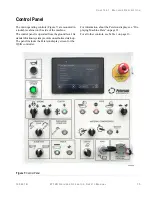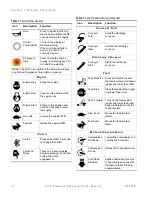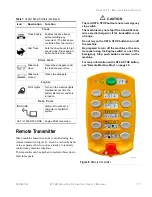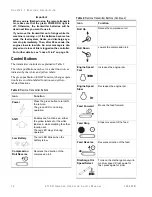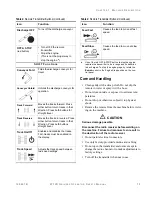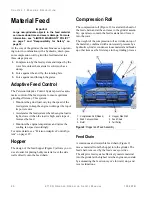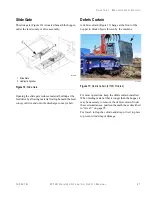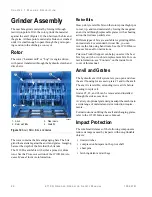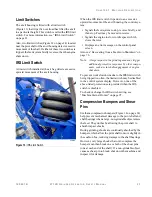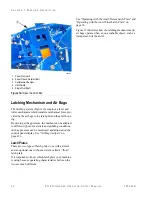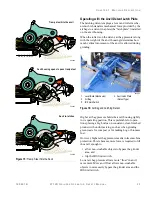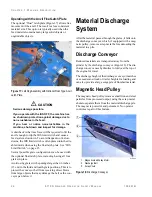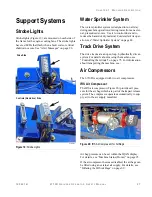
C
H A P T E R
1
M
A C H I N E
D
E S C R I P T I O N
1 2
6 7 1 0 D G
R I N D E R
O
P E R A T O R
S
A F E T Y
M
A N U A L
1 0 9 4 0 1 B
Power Distribution
The engine drives two power distribution systems:
•
Hydraulic clutch and drive belts for the grinder
rotor.
•
Hydraulic pumps for the hydraulic motors, cylin-
ders, and drive tracks.
Engine
The 6710D is equipped with a Caterpillar C32 diesel
engine, with a PT Tech HPTO15 (hydraulic power take
off) clutch.
The engine includes an ECM (electronic control mod-
ule) that communicates with the Peterson Adaptive
Control System. The ECM monitors engine perfor-
mance that can be viewed on the control panel display.
Machines sold in the U.S. include engines with a Tier 4
aftertreatment. Machines sold outside the U.S. may
include a Tier 2 engine that does not include the after-
treatment.
For detailed engine operation and maintenance infor-
mation, refer to the
Caterpillar Operation and Mainte-
nance Manual
, provided in the Owner’s Information
Package, and the
6710D Maintenance Manual
, stored in
the document box onboard your 6710D.
Hydraulic Clutch
When the engine starts, the clutch remains disengaged
until the operator presses the
CLUTCH
control button on
the control panel.
Engaging:
The clutch may be engaged when the
engine speed is between 750–1000 rpm.
During the engage cycle, the clutch provides controlled
slippage to bring the rotor up to engine speed gradually.
When the engine and rotor speeds match, the clutch
becomes fully engaged.
Operating:
When the clutch is fully engaged, the
green ring around the
CLUTCH
button and a green clutch
icon on the display are illuminated.
While the engine is running, the clutch controller senses
and compares input and output speeds for engaging, dis-
engaging, and adjusting clutch performance.
Disengaging:
The clutch should be disengaged
before shutting down the engine. For instructions on
operating the clutch, see “Engaging the Clutch” on
page 72.
The clutch controller monitors clutch conditions. When
a condition exists that may cause damage to the clutch,
the clutch may either disengage or fail to engage.
Failure to Engage–Possible Causes
The following are some causes of an automatic disen-
gagement or a failure to engage:
•
High oil temperature or clogged filter
•
Engine speed too low or too high
•
Shock load causing engine speed to drop below 500
rpm
•
Overload on the clutch (clutch slippage)
•
Previous overload not yet cleared
•
Pushing the
CLUTCH
button while clutch is in the
process of engaging
•
Increasing engine speed while clutch is in the pro-
cess of engaging
•
Trying to re-engage clutch when the grinder is mov-
ing too fast
For details on clutch faults, see “Clutch Fault Mes-
sages” on page 132.
Summary of Contents for Peterson 6710D
Page 6: ...C O N T E N T S 4 67 1 0 D G R I N D E R O P E R A T O R SA F E T Y M A N U A L 109401B ...
Page 158: ...16 2 67 1 0 D G R I N D E R O P E R A T O R SA F E T Y M A N U A L 109401B ...
Page 166: ...I N D E X 17 0 67 1 0 D G R I N D E R O P E R A T O R SA F E T Y M A N U A L 109401B ...
Page 167: ......

















